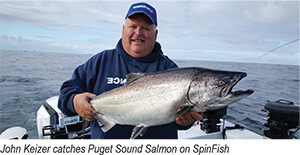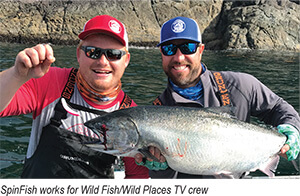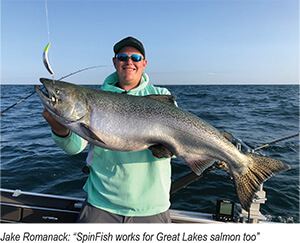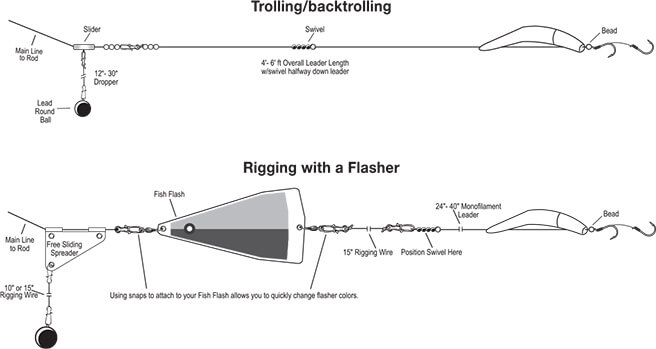Fishing Pro Tips on Spinfish®

A new concept in combining lure-and-bait to produce more and bigger fish is a new trolling lure called SpinFish®. SpinFish, made by Yakima Bait, is a pull-apart, fallible plug featuring a patented “Easy-Fill” bait chamber that disperses scent as it’s pulled through the water column. And while it’s non-buoyant design makes it more of a trolling plug, it can be still-fished in river current, even back-trolled down rivers behind a diver or weight by rigging a buoyant bobber or float a few feet up the leader to prevent the plug from hanging up where bottom currents might go slack.
SpinFish produces a vibrating, spinning, wounded-baitfish action when pulled through the water. Because it’s designed to spin, it can be rigged to spin clockwise or counter-clockwise, just re-thread your leader through the opposite hole in the lure lip. It can be rigged 36-to-60 inches behind Fish Flash®, Free-Sliding Spreader, diver, Spin-N-Glo® Bottom Walker, or conventional sinker; 18-to-42 inches behind dodgers or rotating flashers. To reduce/eliminate line or leader twist it should be rigged in conjunction with a swivel.

What I noticed when trolling this lure in combination with a Fish Flash at the Columbia River mouth for fall salmon is that I had a better hook-to-land ratio if I let salmon pull the rod down a couple times before setting the hook. If I yanked back to set the hook too soon, I would miss hooking a least half of the salmon that attacked this lure. In addition, I discovered that the lure had more lifelike/aggressive action if I didn’t over stuff the bait chamber. Bait cut from anchovy is what I used.





